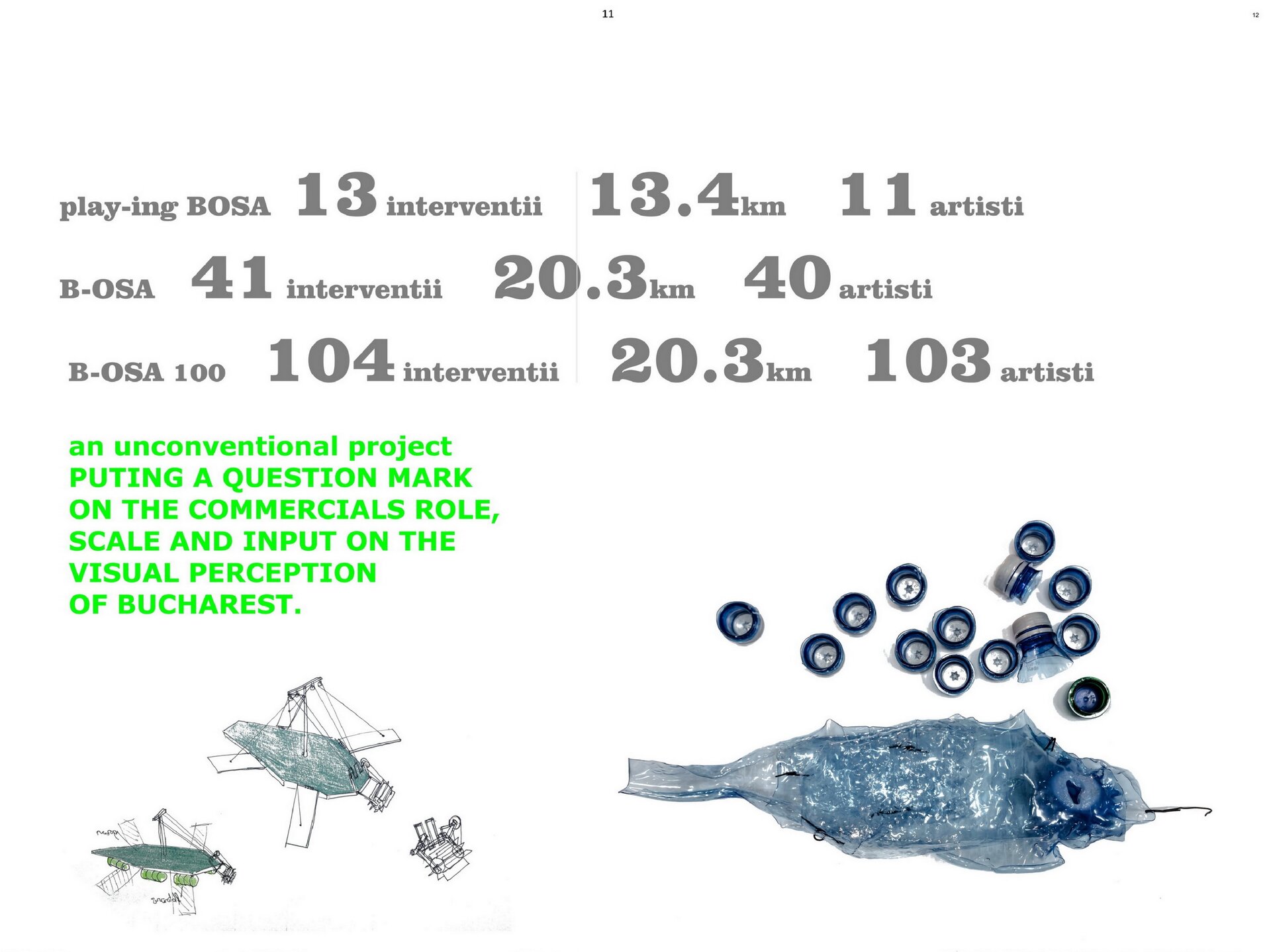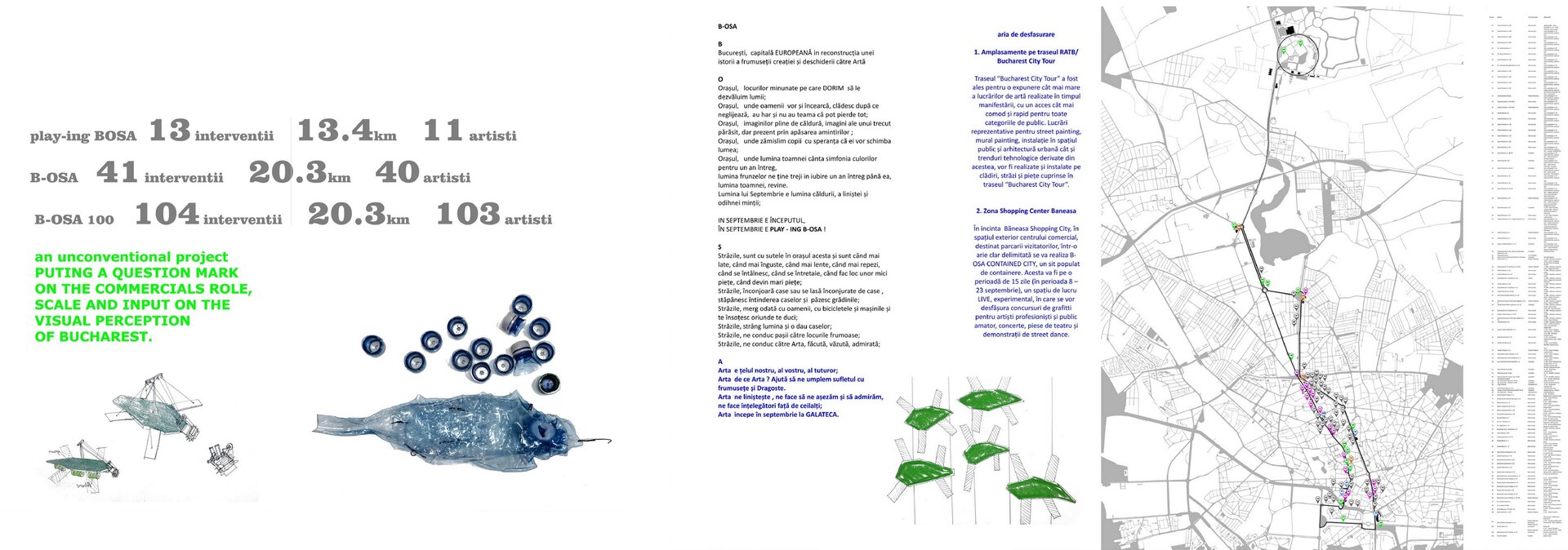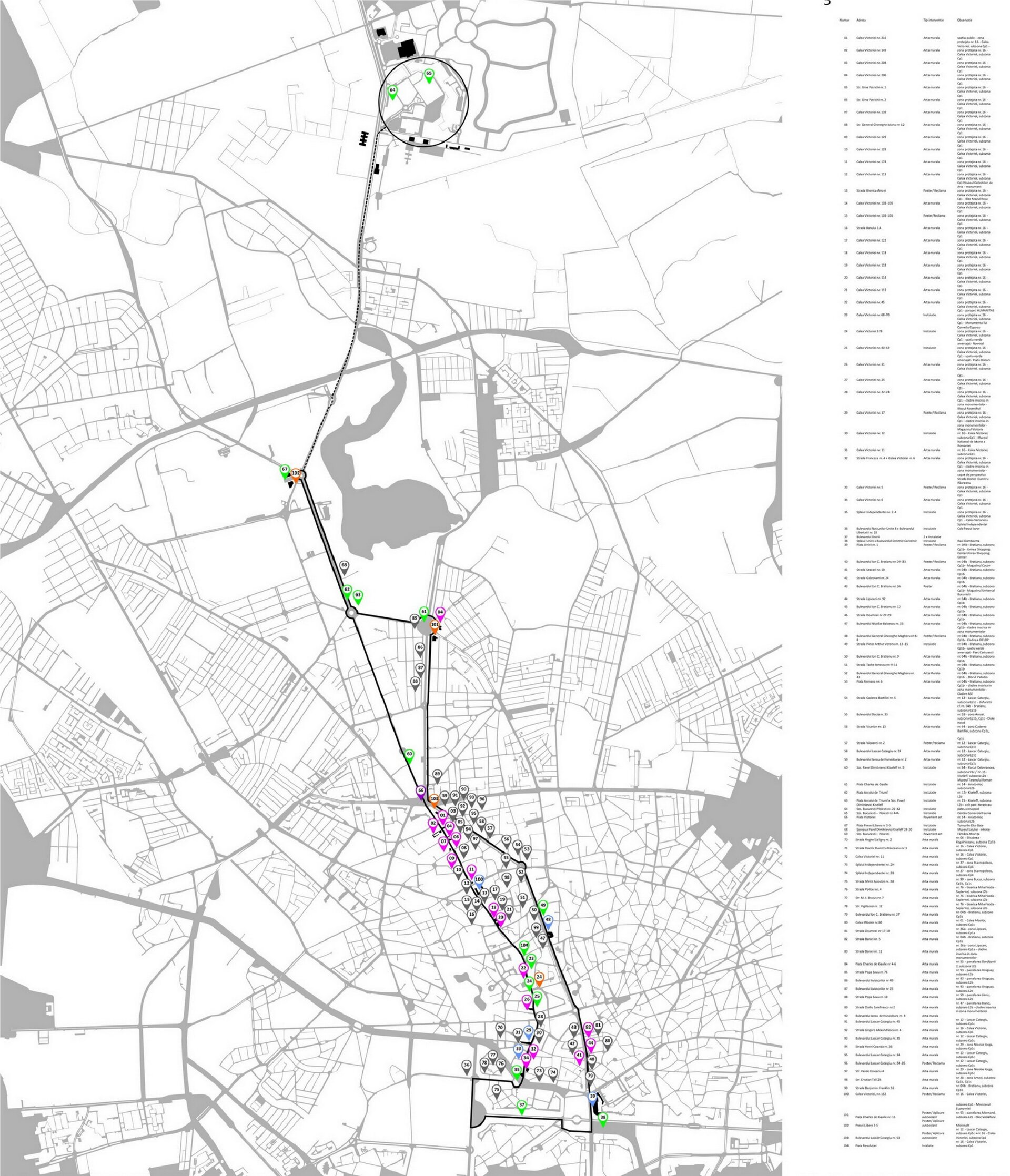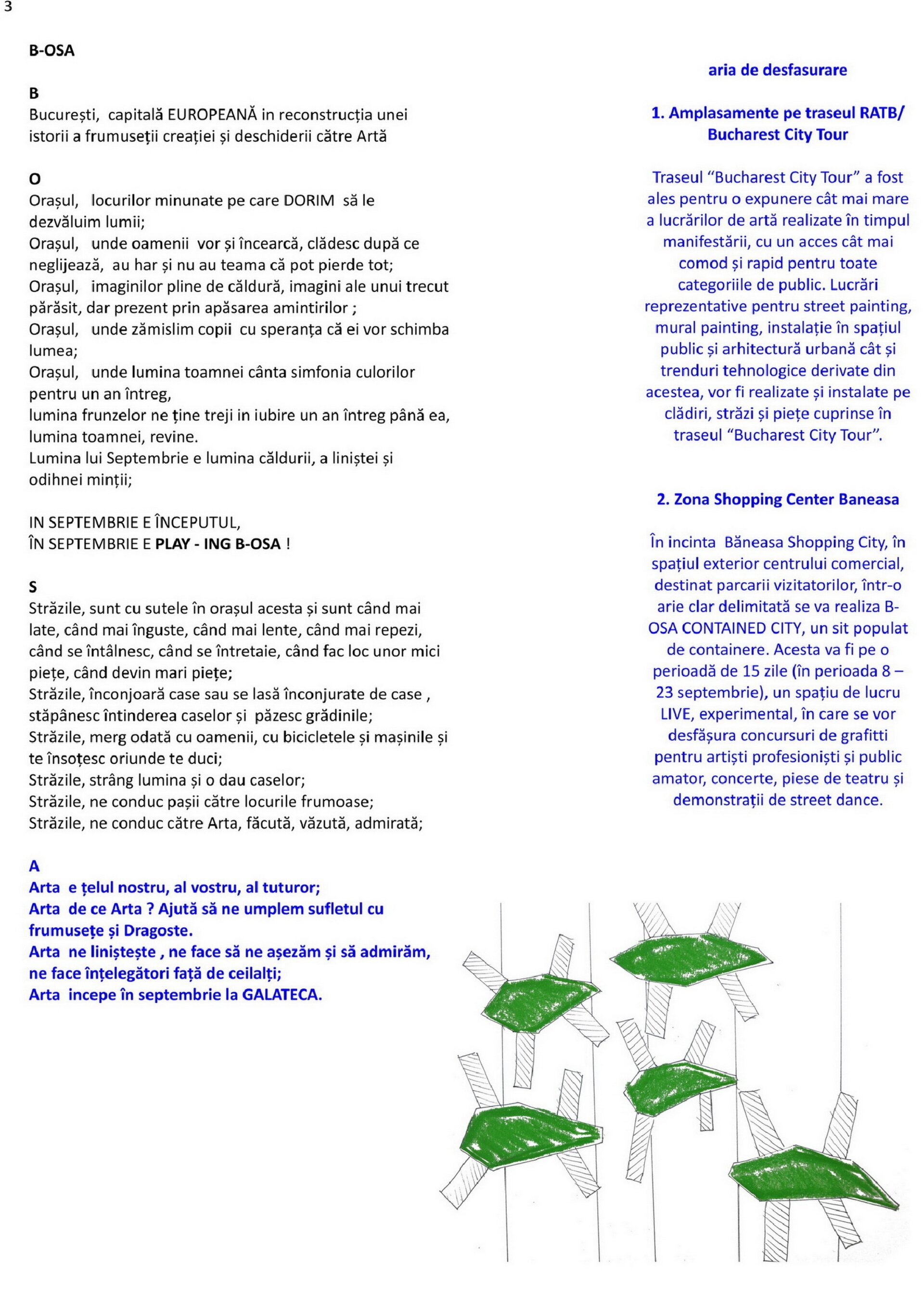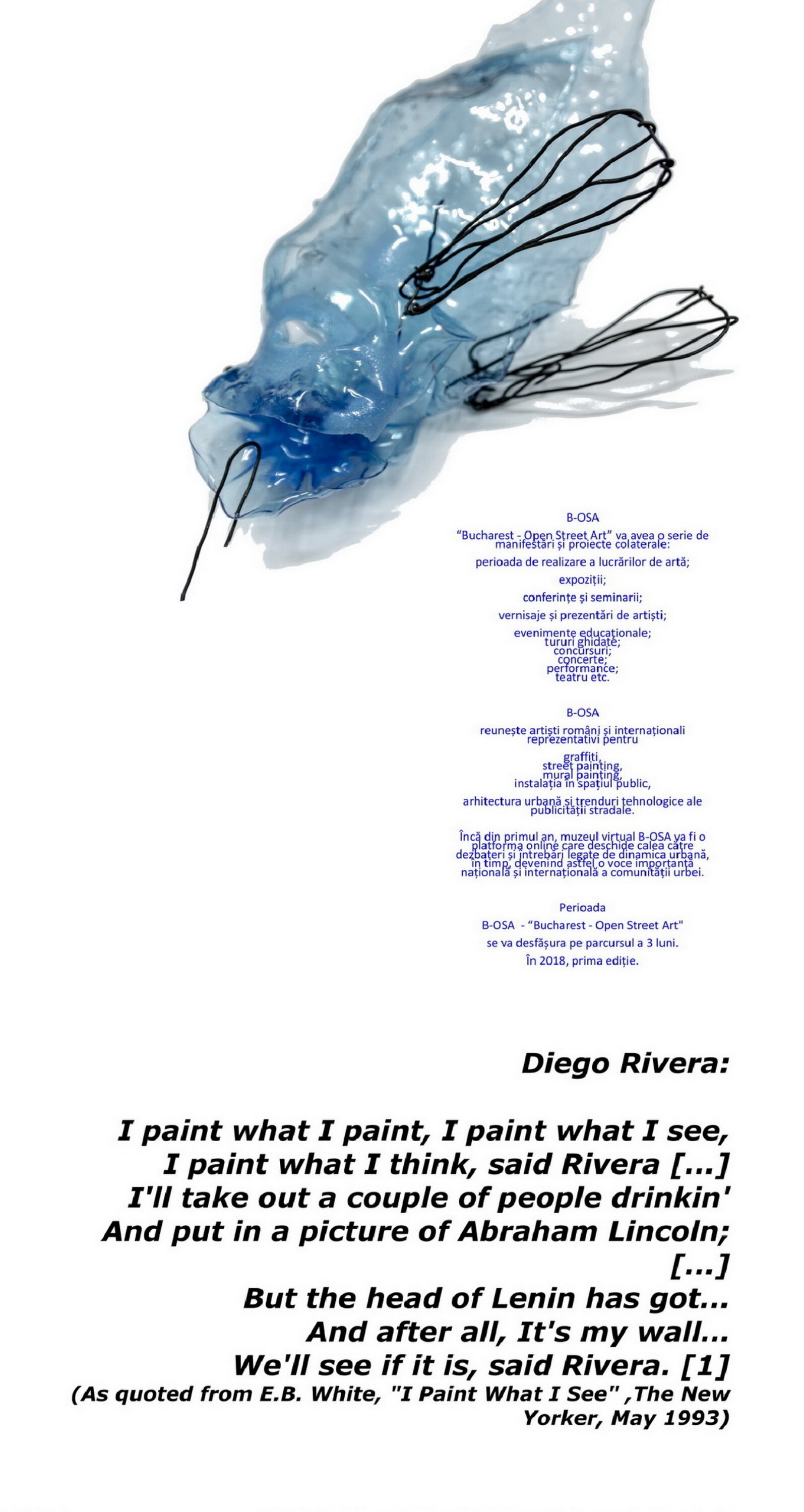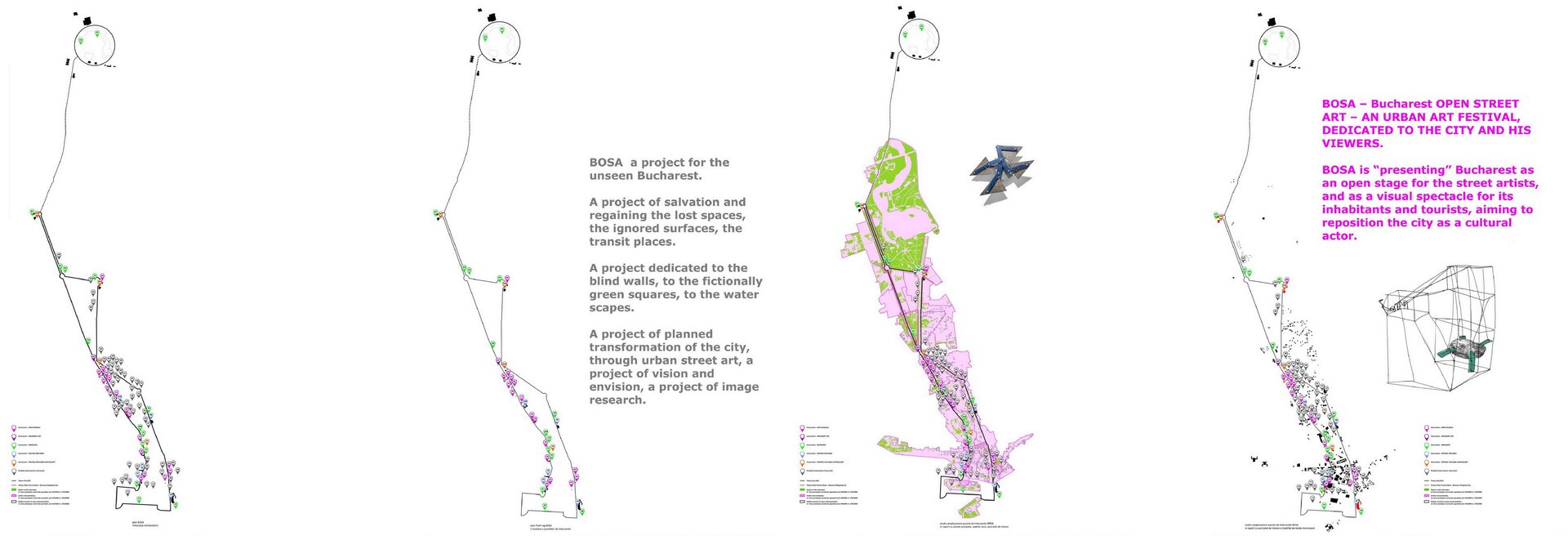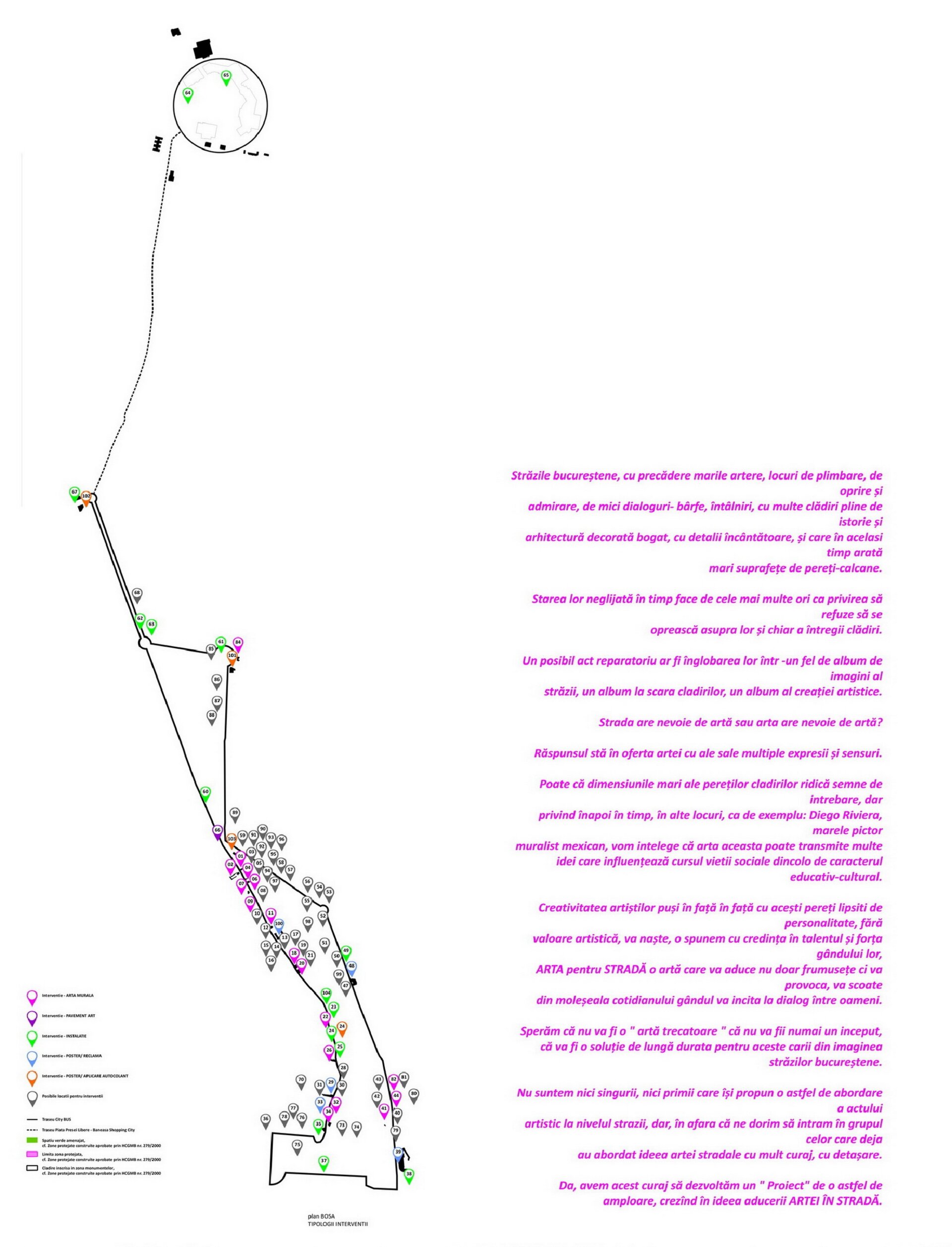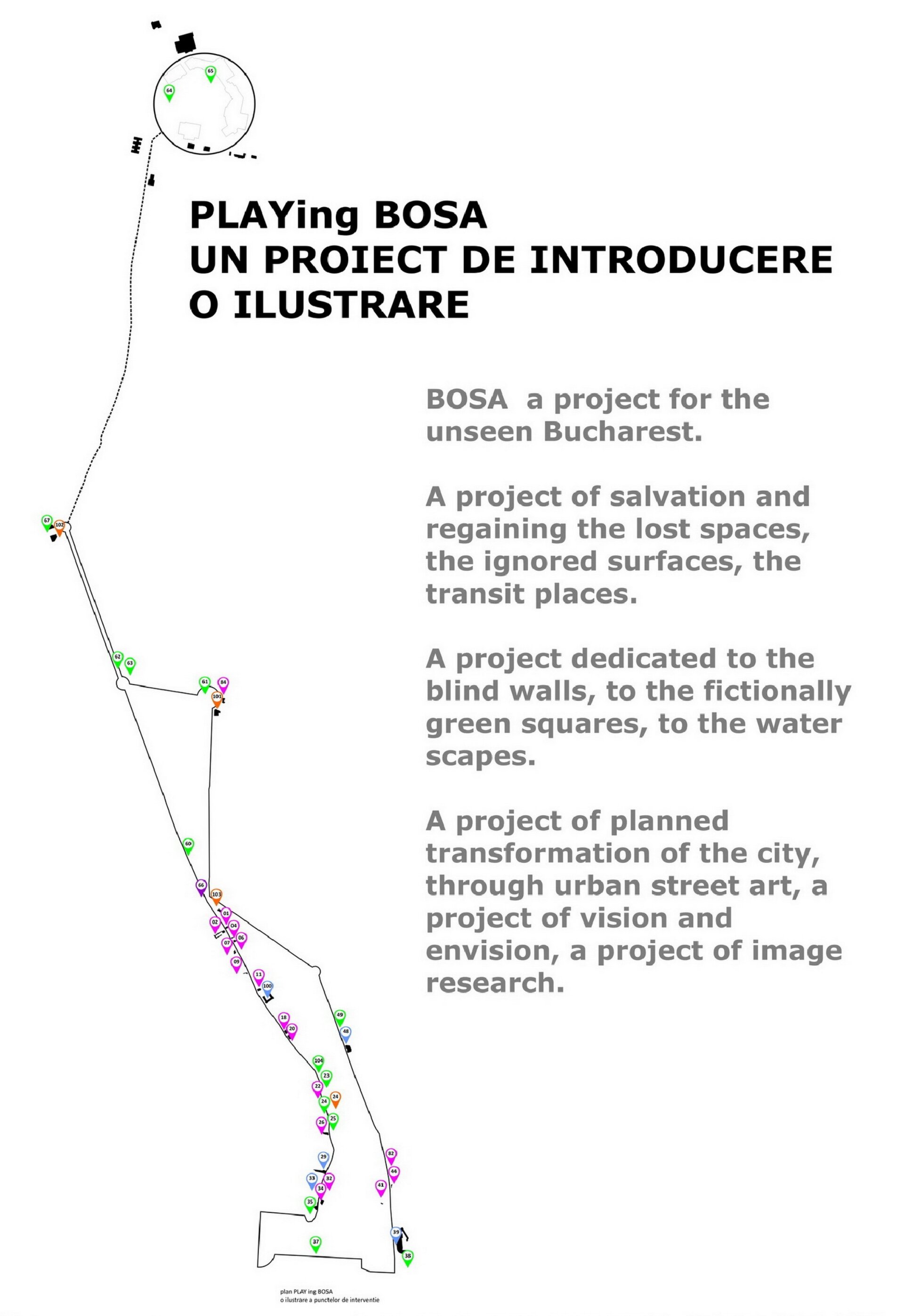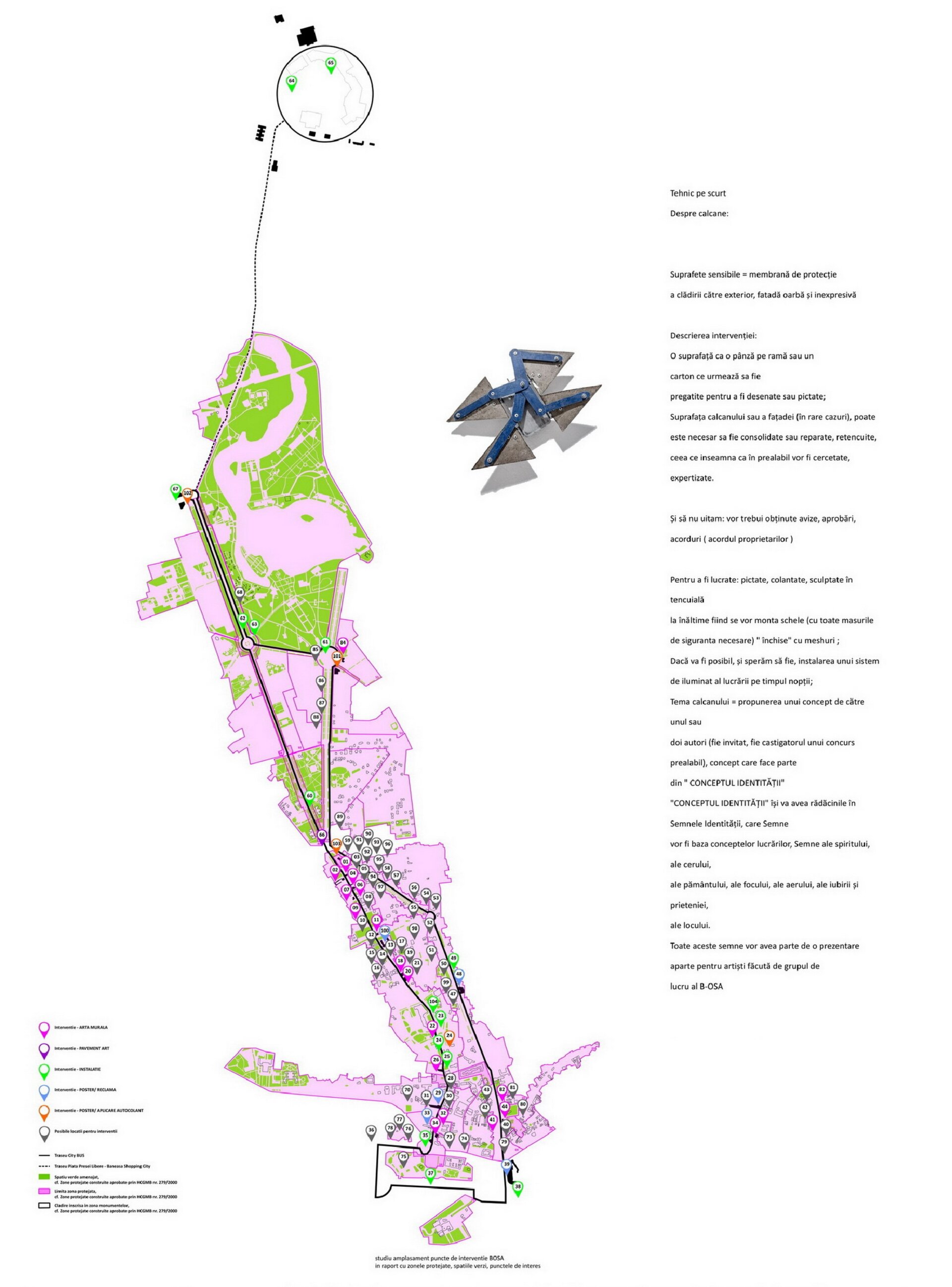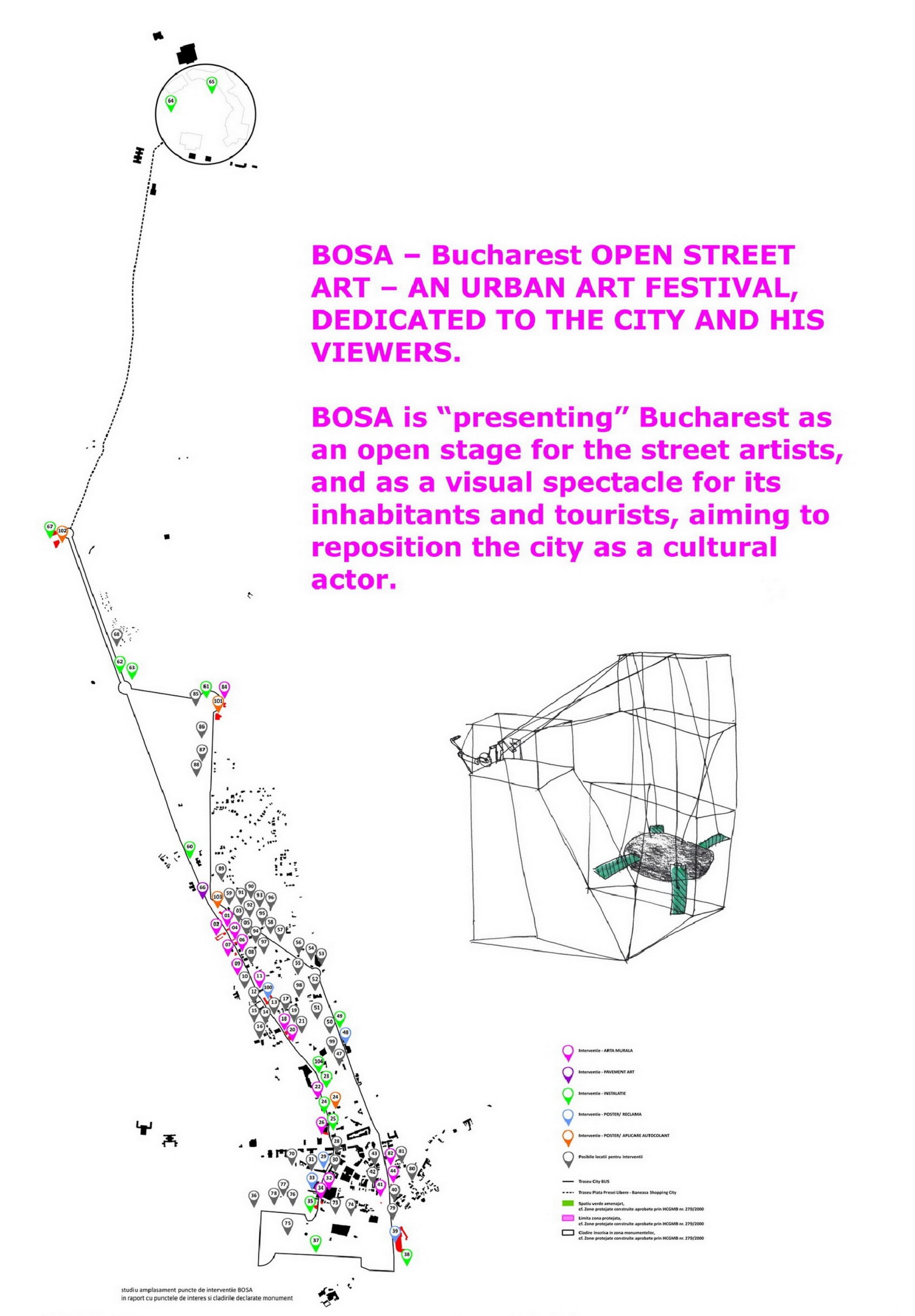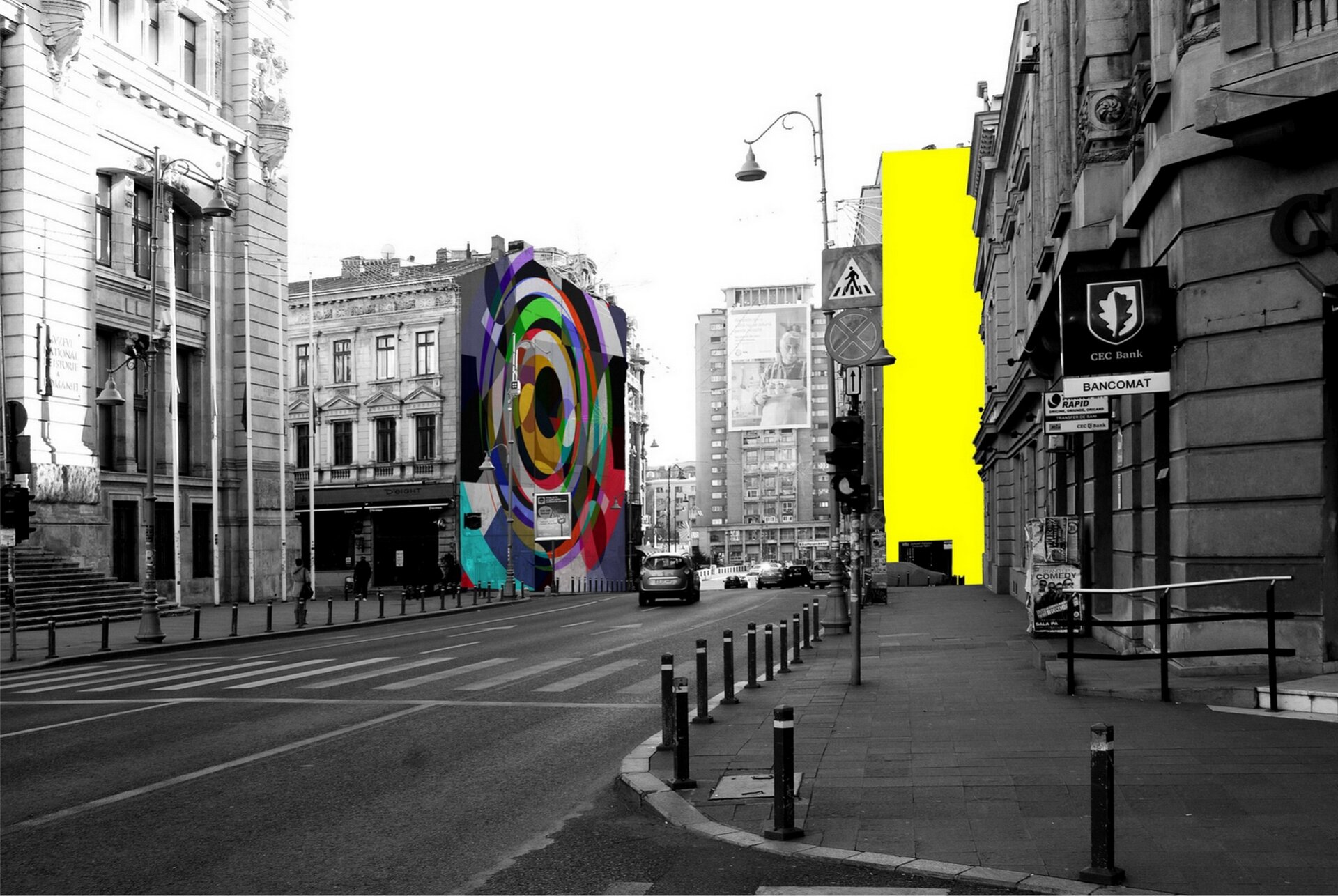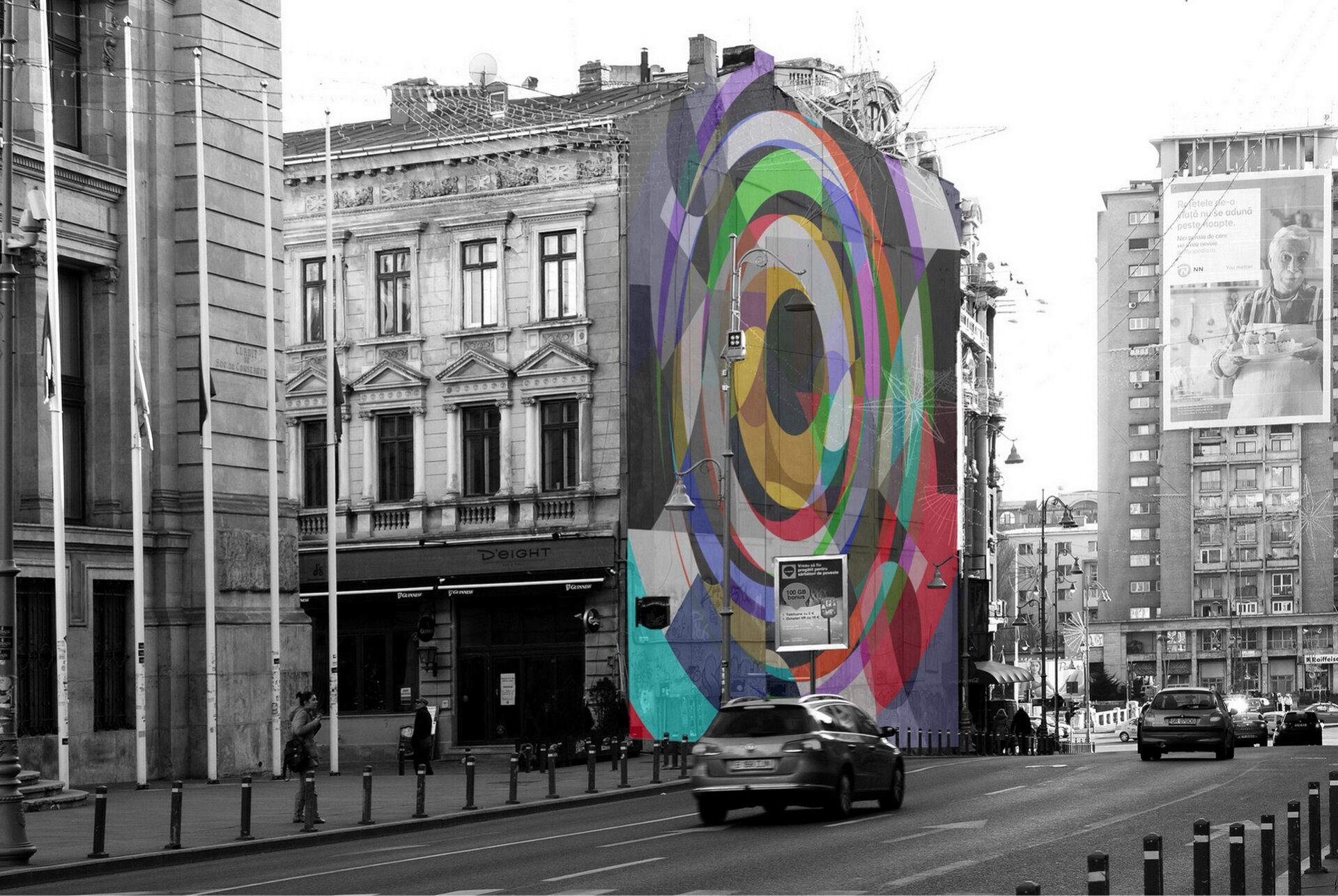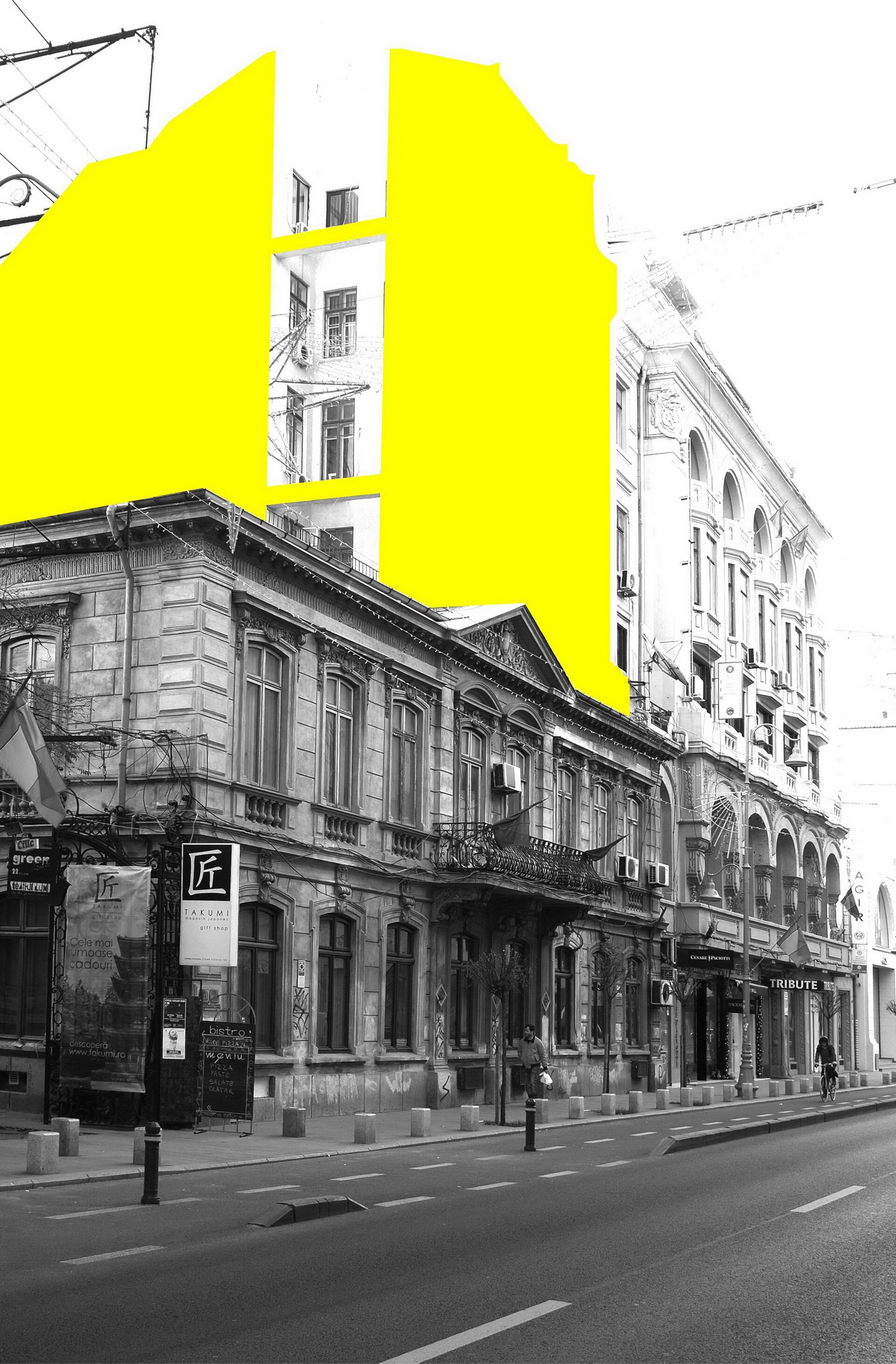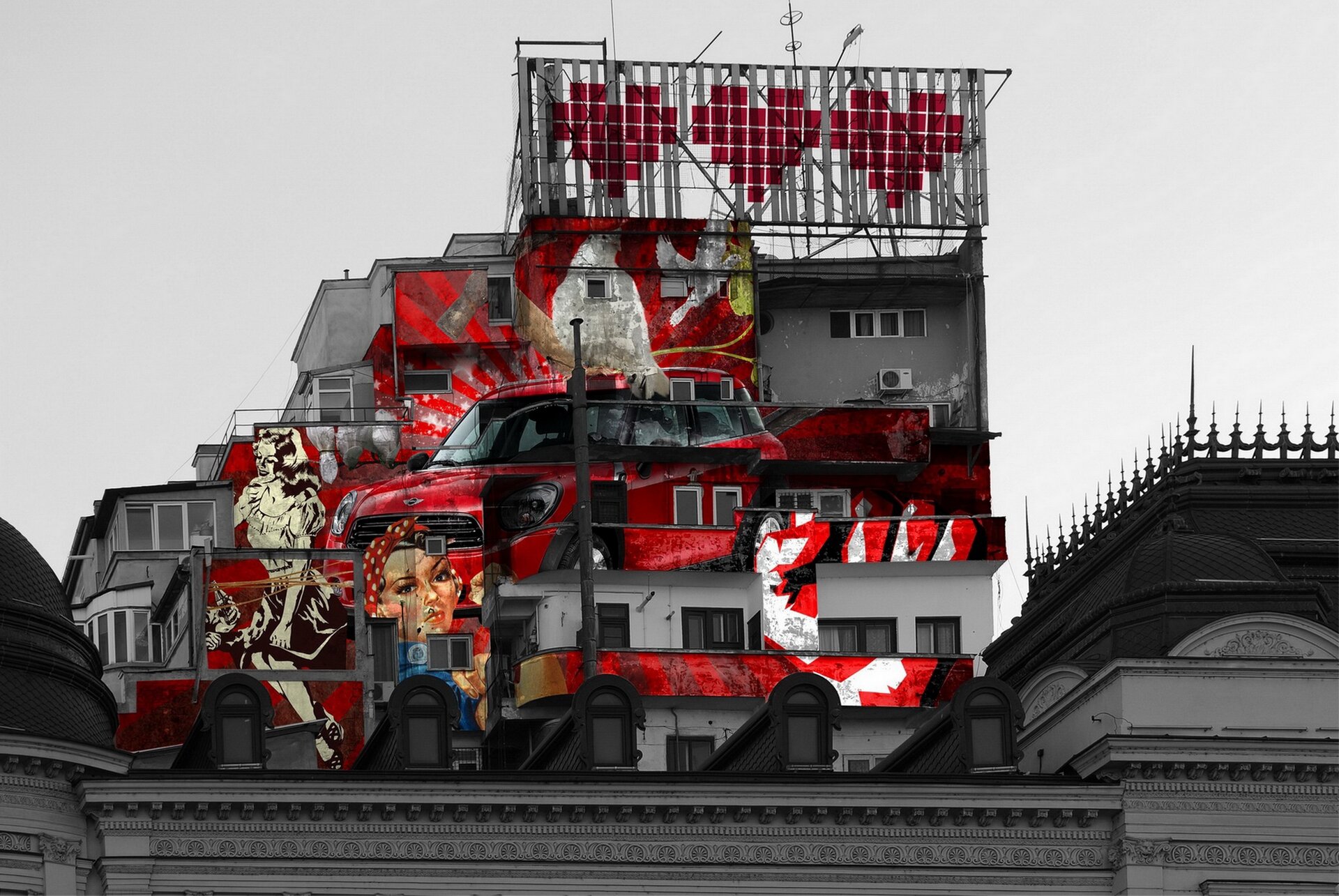
A scenography for... a city – BOSA (Bucharest Open Street Art)
Authors’ Comment
A LONG AND UNKNOWN PROJECT, BUILT AND GROWN, FOR 3 YEARS .... BOSA was a rehearsal with closed doors, architecture, urbanism, scenography, art… for the city, a "rara avis" that appears and disappears.
BOSA * (Bucharest Open Street Art) was an intervention project, imagined and remained at the level of utopia: the city was a stage, artists and art were the actors, and we were its spectators. It was piloted as an international festival in the central area of Bucharest comprising installations, murals and floor art, an event that was intended to be with the international involvement mainly of graffiti artists.
BOSA is a project about appearances, and as in any magical realism, these appearances seemed possible. But the ladder sabotaged the project. It was a “happening” with everything (a more is more), and this probably made it spectacular, it was a baroque of events: openings and artist presentations, exhibitions, educational events, guided tours, contests, concerts, street performance , theater, etc. BOSA brought together representative Romanian and international artists for graffiti, on the vertical and horizontal support of the public space, including urban architecture and technological trends of street advertising.
It was a huge effort on the architectural level: to isolate the central area and interrogate the tissue, to establish about 100 possible intervention points along a length of 20 kilometers of route, including: squares, squares, covered or blind walls ( heels), pedestrian crossings - strategic points that justify an intervention through visibility. The pragmatic part, the investment had the force of a manifesto. The BOSA project was conceived beyond art, as a project of social responsibility towards the city, a project that emphasized the need for interventions, for changes. Training stars of national and international street art, aimed at making capital injections with visual value, raising the level of built tissue. It wanted to be a pilot project, a model for synchronous investments (state and private).
Behind the proposals are image inventories, unfinished maps, the calculation of visibility distances and pedestrian paths, based on extensive study of similar street art festivals in Europe and internationally, because ... Europe has recognized street art as a mechanism effervescent in recent decades. Despite all the legislative complications, street art was seen primarily as a nomadic phenomenon.
As before, it was a mobile caravan, moving through the city like the old circus and theater caravans, located in intersections and squares, spreading culture. Art did not take place, it was universal, it had the force of movement, overcoming the boundaries of exhibitions and closed spaces (paradoxically anticipating a moment of closure behind all limits), occupying public space, as small theaters once stopped in the city, and temporarily became his life: STREET ART available to people, art taken from behind the walls and brought in front of them, on the walls, at their feet.
- The third instance
- Places
- Chasing Italo Calvino’s Invisible Cities
- “S” House
- “Architects, students, pupils: experimental participatory design in Malu”
- A scenography for... a city – BOSA (Bucharest Open Street Art)
- LIMITS…. IN THE OLD WORLD, IN OUR VILLAGE
- Repetition and Diffence in Copenhagen
- Architecture & Memory in Berlin
